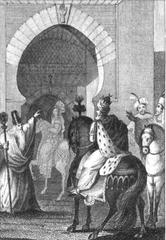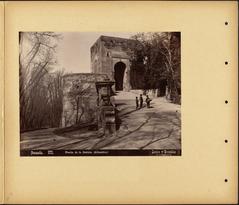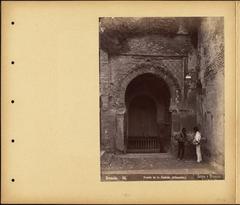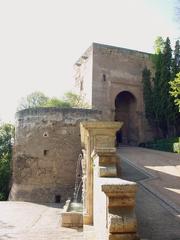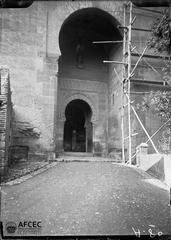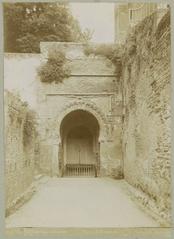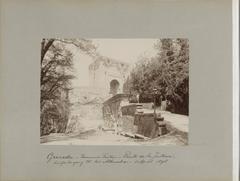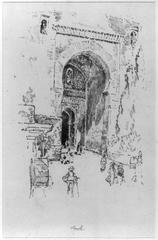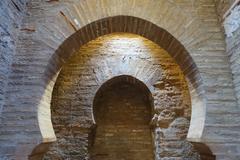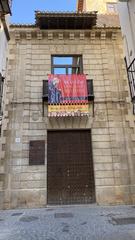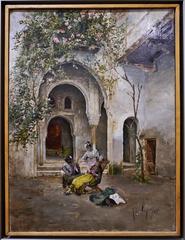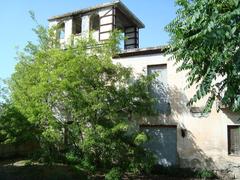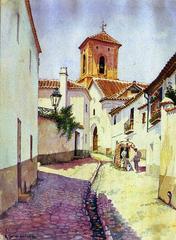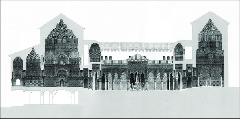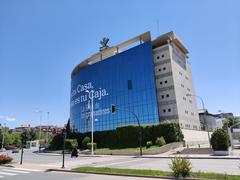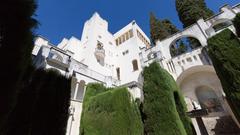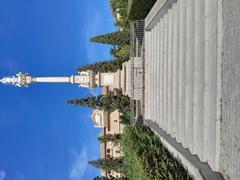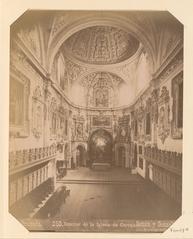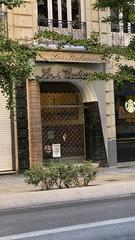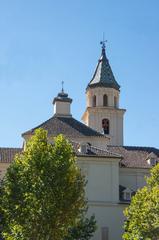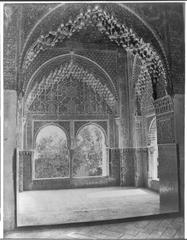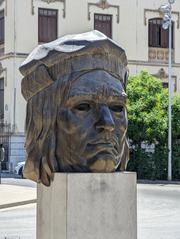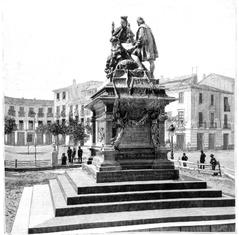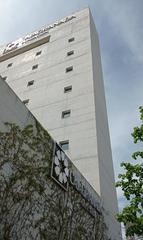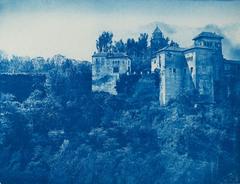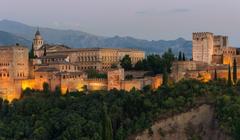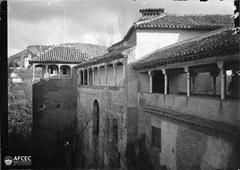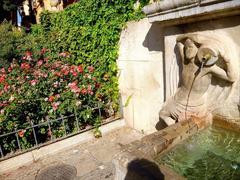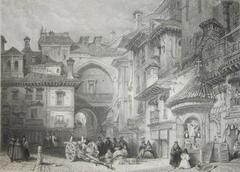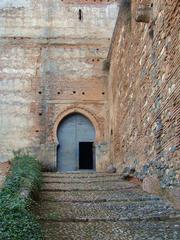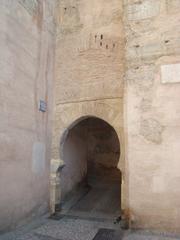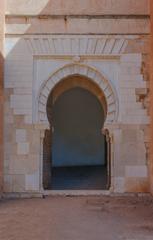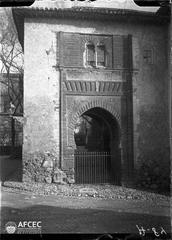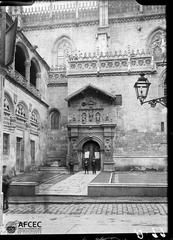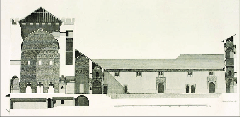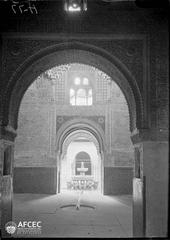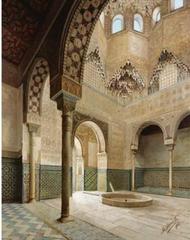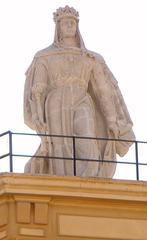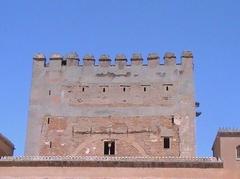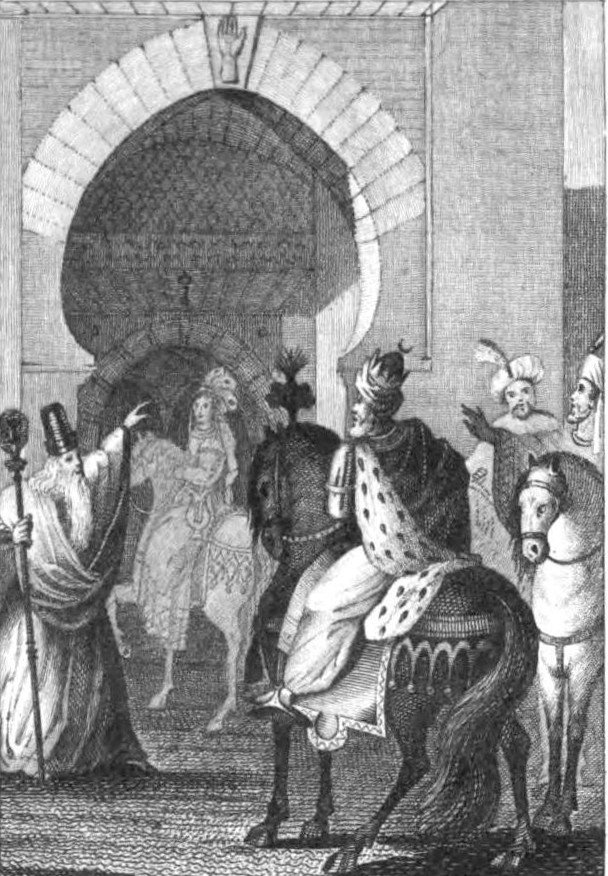
Puerta de la Justicia Granada: Visiting Hours, Tickets, and Historical Sites Guide
Date: 14/06/2025
Introduction: The Significance of Puerta de la Justicia
The Puerta de la Justicia, or Gate of Justice, stands as a remarkable testament to Granada’s rich and layered history. As one of the most iconic monuments within the Alhambra complex, it exemplifies the artistic, cultural, and military sophistication of the Nasrid dynasty—the last Muslim rulers of Iberia. Constructed in the mid-14th century during the reign of Sultan Yusuf I, the gate’s formidable architecture and intricate Islamic motifs serve as both a defensive stronghold and a ceremonial portal steeped in religious and political symbolism. Its prominent location offers panoramic views over the historic Albaicín quarter, and it has borne witness to pivotal events, including the entrance of the Catholic Monarchs in 1492. Today, the Puerta de la Justicia is an integral part of the UNESCO World Heritage-listed Alhambra, attracting visitors eager to delve into Granada’s medieval past (official Alhambra website).
This guide delivers all the essential information for experiencing the Puerta de la Justicia—covering its history, architecture, practical visitor details, accessibility, nearby attractions, and tips for a memorable visit.
Table of Contents
- Introduction
- Historical Context: Origins and Nasrid Construction
- Architectural Features and Symbolism
- The Gate in Christian Granada
- Restoration and UNESCO Status
- Visiting Hours, Tickets, and Accessibility
- Guided Tours, Events, and Photography
- Nearby Attractions
- FAQs
- Planning Your Visit: Tips and Resources
- Conclusion
- Sources and Official Links
Historical Context: Origins and Nasrid Construction
The hill of the Alhambra, known as al-Sabika, has been of strategic importance since Roman times, prized for its mineral resources (visit-andalucia.com). The earliest fortifications date back to the 9th century, notably when Sawwar ben Hamdun used the site for refuge during the Caliphate of Córdoba’s internal strife in 889 AD. Over time, the fortress evolved, especially during the Zirid dynasty in the 11th century, reflecting Granada’s role as a vital stronghold (visit-andalucia.com).
During the Nasrid dynasty’s rule, the Alhambra flourished as the seat of power. Sultan Yusuf I (r. 1333–1354) commissioned the Puerta de la Justicia in 1348, integrating both military and ceremonial functions. Later enhancements under Mohammed V continued the gate’s development as the principal entrance from Granada, reinforcing the dynasty’s authority and sophistication (Explorial; Guías Granada).
Architectural Features and Symbolism
Defensive Design
The Puerta de la Justicia is a fortified tower with a distinctive bent entrance, a strategic feature designed to impede attackers. Visitors pass through a sequence of arches and turns, making the gate both imposing and defensible (Guías Granada).
Decorative Elements
- Horseshoe Arches: The outer and inner arches are crafted from white Macael marble, a hallmark of Nasrid architecture.
- The Hand and the Key: Above the outer arch is a carved hand (often interpreted as the Hand of Fatima, symbolizing protection and the Five Pillars of Islam), while the inner arch features a key, representing guardianship and authority. Local legend holds that the world will end when hand and key meet (Explorial; Blog MyTopTour; GranadaGuia.com).
- Inscriptions: Arabic inscriptions, including the Nasrid motto “Wa la ghalib illa Allah” (“There is no victor but God”), reinforce the dynasty’s legitimacy and the Islamic identity of the monument (GranadaGuia.com).
- Interior Features: Inside the passage, original tilework, stone benches for guards, and a blend of vaulting techniques exemplify Nasrid craftsmanship (Guías Granada).
After the Christian conquest, a chapel dedicated to the Virgin of the Rosary was added above the gate, illustrating the blend of Islamic and Christian influences (Explorial).
The Gate in Christian Granada
The fall of Granada in 1492 marked the end of Islamic rule in Spain, and the Catholic Monarchs made their symbolic entry through the Puerta de la Justicia. While the Alhambra was adapted for new functions, the gate itself retained much of its original character, serving as a tangible link to Granada’s Islamic past (visit-andalucia.com).
Restoration and UNESCO Status
Years of neglect and damage, particularly during the Peninsular War and the 18th century, threatened the Alhambra and its gates. Restoration efforts began in the 19th century, inspired by travelers such as Washington Irving, and have continued into the present to preserve the site’s splendor (Blog MyTopTour). The Alhambra, including Puerta de la Justicia, was granted UNESCO World Heritage status in 1984, recognizing its global significance as a masterpiece of Islamic and Spanish architecture (visit-andalucia.com).
Visiting Hours, Tickets, and Accessibility
Visiting Hours
- Alhambra Complex:
- April–October: 8:30 AM – 8:00 PM
- November–March: 8:30 AM – 6:00 PM
(Last entry is typically one hour before closing. Confirm current hours at the official site.)
- Puerta de la Justicia Exterior:
The gate itself is accessible 24 hours a day as it is outside the ticketed area (Map and Camera; Nomads Travel Guide).
Tickets
- Entry to the Gate:
Free and open at all times. No ticket is required to visit the exterior and esplanade. - Alhambra Monuments (Nasrid Palaces, Alcazaba, Generalife):
Advance online booking is essential due to high demand.- Official ticket purchase
- General admission: Approx. €19 (2025)
- Bring the same ID used for ticket booking for verification (Earth Trekkers).
Accessibility
- The approach to Puerta de la Justicia involves cobblestone paths and inclines, which may challenge those with mobility issues. The main Access Pavilion entrance offers easier access to the ticketed monuments.
- Strollers are not permitted inside the main monuments but can be stored at lockers near Puerta del Vino.
- The gate area is generally accessible, but some uneven surfaces remain (Map and Camera).
Guided Tours, Events, and Photography
- Guided Tours:
Numerous guided tours feature the Puerta de la Justicia and provide historical context. Booking a tour enriches your visit. - Special Events:
Cultural events and night visits may be held near the gate—check calendars for details. - Photography:
The gate is a favorite subject. Early mornings and late afternoons offer optimal lighting and fewer crowds. Flash and tripods may be restricted.
Nearby Attractions
- Alcazaba: The Alhambra’s oldest fortress, offering panoramic city views.
- Nasrid Palaces: The heart of the Alhambra, accessible by timed ticket.
- Generalife Gardens: Renowned for their landscaping and vistas.
- Palace of Charles V: A Renaissance gem with a circular courtyard.
- Albaicín: The historic Moorish quarter, visible from the esplanade.
Visitor Amenities
- Toilets: Located at the Access Pavilion, Palace of Charles V, and Generalife.
- Food & Drink: Onsite cafés and nearby restaurants; bring water, especially in summer.
- Bag Policy: Only small backpacks (under 40×40 cm) allowed inside; larger bags must be stored (Earth Trekkers).
FAQs
Q: Do I need a ticket to visit Puerta de la Justicia?
A: No, the gate’s exterior is free to visit. Tickets are required for entry to the main Alhambra monuments.
Q: What are the opening hours?
A: The gate is accessible 24 hours; the Alhambra complex operates from 8:30 AM to 8:00 PM in summer, and to 6:00 PM in winter.
Q: Is the gate wheelchair accessible?
A: There are cobblestones and inclines. For easier access, use the main Access Pavilion entrance.
Q: Where do I buy Alhambra tickets?
A: Online at the official website.
Q: Are guided tours available?
A: Yes, many guided tours include the gate and the Alhambra’s key sites.
Planning Your Visit: Tips and Resources
- Arrive early or late to avoid crowds and enjoy the best photography light.
- Wear comfortable shoes and use sun protection.
- Carry snacks and water as food options inside are limited.
- Check your ticket’s time slot for Nasrid Palaces carefully.
- Explore virtual tours and interactive maps on the official Alhambra website for trip planning.
Download the Audiala app for guided audio tours and real-time updates about Granada’s historic sites. Follow us on social media for news and inspiration.
Conclusion
The Puerta de la Justicia encapsulates the grandeur and complexity of Granada’s past, merging defensive innovation, Islamic artistry, and symbolic meaning. Freely accessible and visually stunning, it remains a must-see for travelers exploring the Alhambra and Granada. With careful planning—securing tickets, joining guided tours, and using official resources—you can make the most of your visit to this extraordinary gateway and the treasures surrounding it.
Sources and Official Links for Further Reading
- History of Alhambra Granada, visit-andalucia.com
- Puerta de la Justicia, Explorial (2025)
- Guías Granada – Puertas Guide Alhambra (2025)
- Blog MyTopTour – Puerta de la Justicia (2025)
- GranadaGuia.com – Las Puertas de la Alhambra (2025)
- Andaltura.com – Puerta de la Justicia (2025)
- Earth Trekkers – Alhambra Visit Guide (2025)
- Thrillophilia – Puerta de la Justicia Granada (2025)
- Map and Camera – How to Visit Alhambra (2025)
- Nomads Travel Guide – Puerta de la Justicia (2025)
- Granada Hoy – Puerta de Justicia Alhambra Granada (2025)
- Official Alhambra Website (2025)
- Official Alhambra Access Info (2025)
